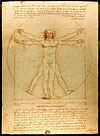User:Uwappa
22:47, 19 December 2024 UTC [refresh]
Today's motto...
Today's featured picture

|
The papaya (Carica papaya), also known as the pawpaw, is a plant species in the family Caricaceae, and also the name of the plant's fruit. It was first domesticated in Mesoamerica, within modern-day southern Mexico and Central America, and is now grown in several countries in regions with a tropical climate. The papaya fruit is a large berry about 15 to 45 cm (5.9 to 17.7 in) long and 10 to 30 cm (3.9 to 11.8 in) in diameter. The fruit is cultivated for food, being typically consumed when ripe and eaten raw without skin or seeds. The black seeds are also edible and have a sharp, spicy taste. This photograph shows the longitudinal cross section of a papaya fruit lying on its side, with orange flesh and numerous black seeds visible. The picture was focus-stacked from seven separate images. Photograph credit: Ivar Leidus
Recently featured:
|
About
[edit]| Uwappa creates a web to save Banjora from the mundurras in an Ngarrindjeri dreaming story. |
| This user has experienced guidance from Yurluggur. |
God, I liked him better before he died
| This user is not yet dead. Please check back later... |
| This user loves the Kurangk. |
| This user has enjoyed the hospitality of the Ngarrindjeri. |
| wgu-0 | This user has learnt a few words of Wirangu. |
| This user felt at home in Nantawarrina, Adnyamathanha land. |
| This user thanks the Yolŋu for sharing basic Aboriginal culture. |
| This user loves dragon dreaming. |
Toolbox
[edit]
Climate |
|
|---|---|
| The core of the human eye can read
|
|

|
|
| Colours | |

Graphs |
|

Edit |
|

Wikipedia |
|

Body Roundness |
Body Roundness Calculator[edit]Development Tools[edit]
General Calculator stuff[edit]
Wikitext[edit]Body Roundness[edit] |
Graphs
[edit]I love it how Aboriginal paintings depict a whole story.
Good graphs can also tell a story, as Edward Tufte describes in his books on data visualization.
Global warming
[edit]-
Daily Sea Surface Temperatures 60S-60N 1979-2023
This Copernicus graph is a jewel. It is a graph that tells a whole story in an instant.
The blue, white, red lines are like waves of an ocean. The colours seem to show increasing temperature, yet actually show time, decades of data. Time and temperature coincide.
2023 jumps out of the waves, is out of bandwidth. Oceans are warming.
Climate change graphs
[edit]-
A Péguy climograph shows average temperature and precipitation of a climate per month.
-
Change of climate and its impact, with red for impossible agriculture.
-
120 years of climate change in Paris.
-
Climate change in Paris 1881-2000.
-
Impact
Climate tipping point +1.5 °C
[edit]-
The 20 year average is expected to cross +1.5 °C in 2032.
-
In 2000 the tipping point was expected in 2045. In 2024 the expectation was 2032.
Polls
[edit]This chart tells the story of an election or poll. What are the changes since the previous election?
- new party.
- party that gained seats.
- party maintained seats, did not win, did not lose.
- Party lost seats. The top of is the result in the previous election.
- party lost all seats.
Collatz conjecture
[edit]:( Graph module down
[edit]| Graphs are unavailable due to technical issues. Updates on reimplementing the Graph extension, which will be known as the Chart extension, can be found on Phabricator and on MediaWiki.org. |














